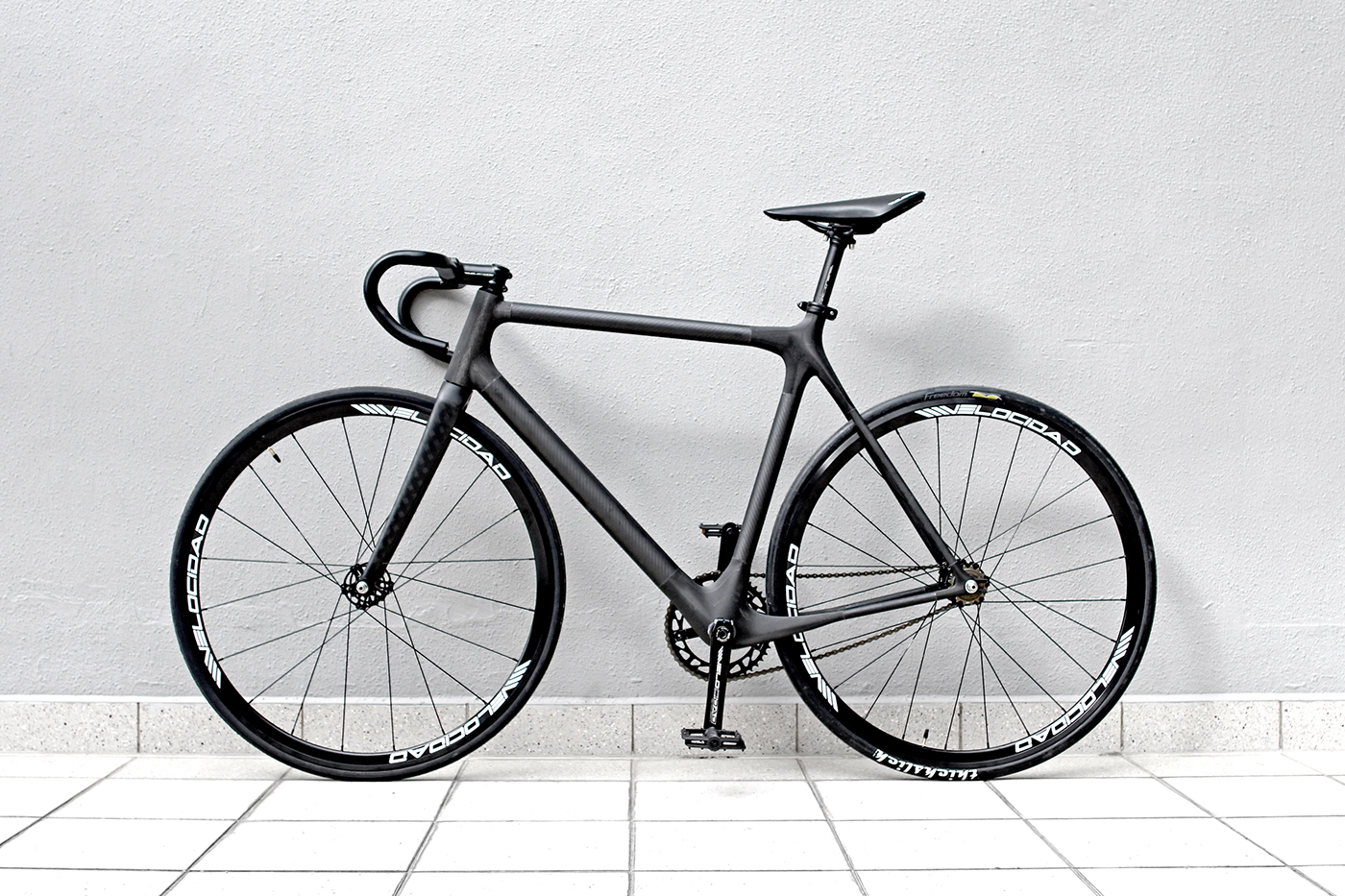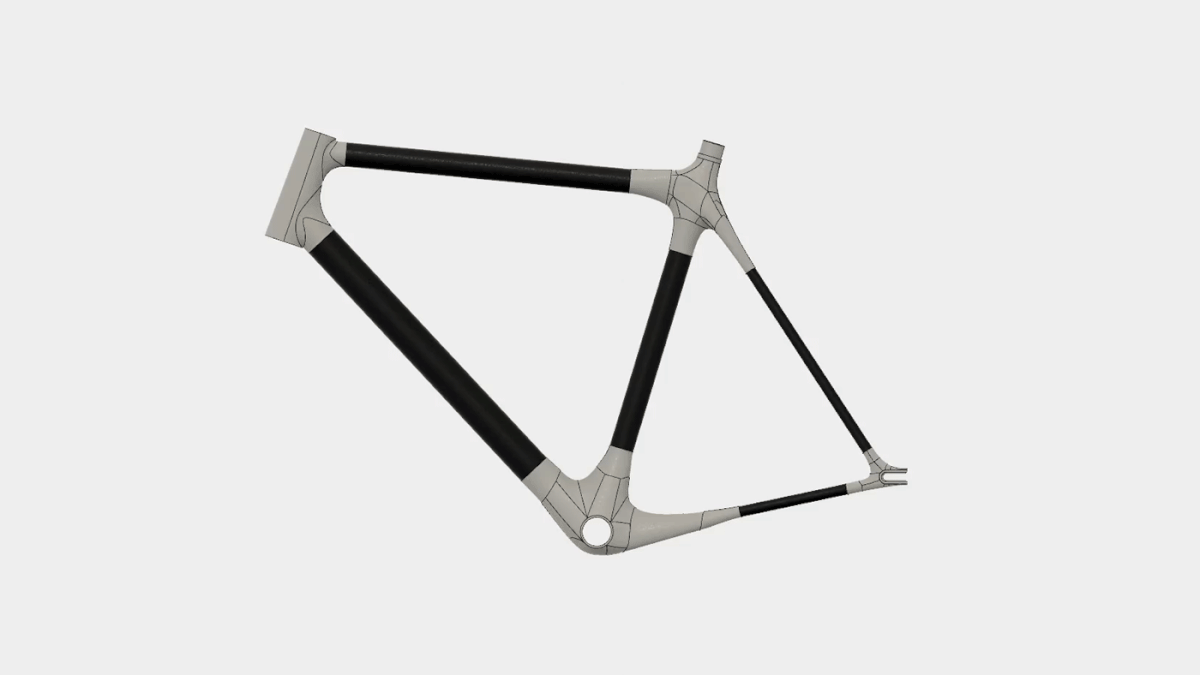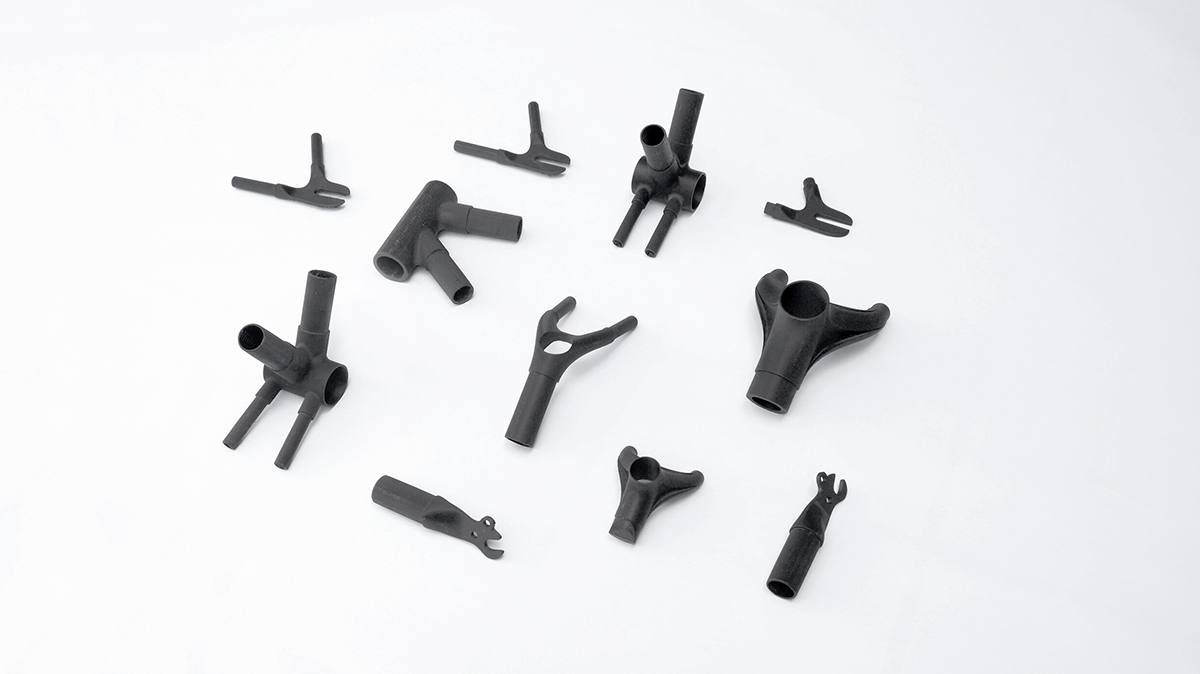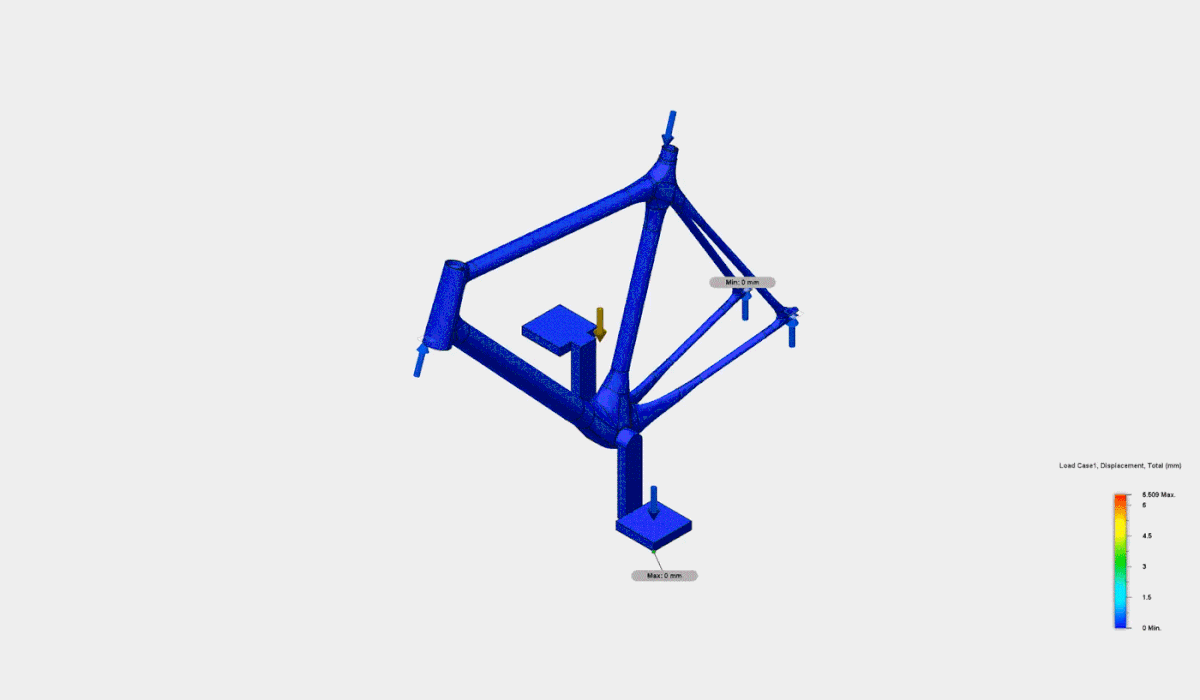
FIX-C: A Continuous Carbon Fixie
This project was initiated by the Design Incubation Center as an experiment to test the capabilities of our newly purchased 3D printer, the Markforged X7. With the ability to print with continuous strand carbon fibre, this signalled an opportunity for us to push the limits of the printer to create a lightweight full carbon fixed gear bicycle (fixie) using 3D printed lugs and off-the-shelf filament wound carbon fibre tubes.

Constraints
1. Bed size
The build size of the printer is 330mm x 250mm x 200mm, which fits most large components but prevented us from building a full monocoque frame. We had to figure a way out to make a composite frame strong from parts, which was a challenge.
2. Print Orientation
Most of the parts had loads running in multiple axes, which meant that we would be compromising strength in a minimum of one axis, depending on how we positioned the part on the bed. This is the biggest limitation of FDM printing.
3. Continuous Carbon Fibre
Given that we had a new-found capability of running continuous strand carbon fibre, there were endless variations and possibilities on reinforcing the parts. The only limitation would be material, and as an extension, cost.

Geometry
The final bike frame geometry was based off an existing road bike frame with a compact design, for a slightly more nimble and aggressive road bike feel. The bike size was also calibrated to my own height for comfort. I stand 180cm tall, and weigh 65kg.
Effective Top Tube Length: ~560mm
Seat Tube Length: ~578mm
Head Tube Length: ~163mm
Chainstay Length: ~420mm
Wheelbase: ~971mm
BB Drop: ~78mm


Eiger
Eiger is the proprietary software that we used to lay continuous strand carbon fibre in each part. We used a technique commonly found in the aviation industry called "sandwiching" to strengthen the part with carbon fibre "panels", as seen below. It was mainly trial and error to find out which composition would work for a given part, but tutorials can be found in this link.

Prototypes
We tested a variation of parts first, to stress test them and inspect the finishing and joining methods. Two prototype frames were then made before the final "rideable" one was created. The first mimicked the proportions of a steel frame, which we found to fail easily. Version 2.0 weighed in at 1123g (excluding fork and components), which was lightweight but not structurally sound.







Finite Element Analysis (FEA)
Using Fusion 360's simulation workspace, 6 variations of the bike frame were tested against each other to see how much deformation they would eventually undergo when built. The variations were in the length of the inserts (10-30mm) and wall thickness (solid-5mm). The combination of 30mm inserts with 5mm wall thickness showed the least displacement, and was chosen as the final design. The animation shown below is an exaggeration of the actual displacement of the frame.

Final Model
The third and final iteration bore success, after thickening the bottom bracket, extending the chain stay joint and making adjustments to the seat lug. The frame weighs in at 1559g (excluding fork and components), which isn't Tour de France worthy, but is definitely a step up for an average consumer like myself. I am looking to modify the profile of the chainstays to ensure a stiffer ride.





Thank you for checking this project out; stay tuned for more improvements!
